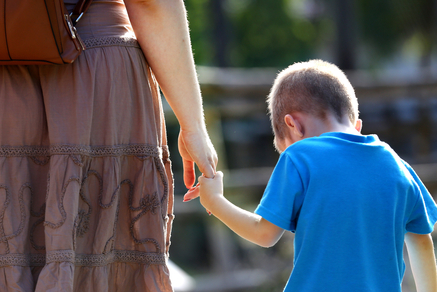 One day I received a call in the office from someone seeking to make a documentary on individuals with autism spectrum disorders (ASD) transitioning to the workforce. The caller wanted to know if I had patients who might be interested in participating. I thought for a moment: It had been a typical week in my developmental pediatrics practice, where I specialize in autism, at the Rose F. Kennedy Children’s Evaluation and Rehabilitation Center.
One day I received a call in the office from someone seeking to make a documentary on individuals with autism spectrum disorders (ASD) transitioning to the workforce. The caller wanted to know if I had patients who might be interested in participating. I thought for a moment: It had been a typical week in my developmental pediatrics practice, where I specialize in autism, at the Rose F. Kennedy Children’s Evaluation and Rehabilitation Center.
During the week, one of my older teenage patients had been placed in a residential facility. This was after more than two years of advocacy by his family for placement due to the minimally verbal young man’s highly aggressive behaviors.
Another teen whom I follow had been sent to the emergency room via ambulance from his school after exhibiting extremely out-of-control behavior, placing himself and others in danger. A minimally verbal young teen whom I saw has a history of wandering out of the school and the home, despite locks and supervision, so I spoke with his parents about the importance of getting a tracking device for him.
With two other families I began discussions about the process of seeking guardianship for their almost-18-year-old children. We also discussed starting to make decisions about the living situations and daytime activities they will require when they graduate from school at age 21.
These were the images that flashed before my eyes as I attempted to articulate a response to the inquiry on the phone. In the end, I told the filmmaker that I did not have access at the moment to individuals making a transition into the workplace, but if he wanted to demonstrate the range of outcomes for young adults with ASD on reaching adulthood, we had many examples of young adults facing more-serious challenges.
The reality of many children with ASD
I have written previously on the small number of children with ASD who do extremely well over time and seem for all intents and purposes to have outgrown their diagnoses. And there are many of my patients who make excellent progress, attaining accomplishments that once seemed unimaginable to their parents.
However, it is the group of children with severe impairments, often a dual diagnosis of ASD and intellectual disability, about whom I write today. In our center, this group with these dual diagnoses represents more than 50 percent of the children we serve. I suspect that for most people untouched by autism, such outcomes are surprising—even shocking. It seems that the poster children for autism are often quirky, brilliant, but socially challenged individuals like Sheldon on The Big Bang Theory or your cousin who is a little odd, lives alone and makes a good living as a computer IT guy. These are not the majority of my patients. And for families struggling to raise children with severe autism and intellectual disability who are confronting the adult years, such societal expectations leave them feeling alone.
My hope for children with ASD and their families
The wide spectrum of outcomes in ASD is clearly related to the wide “spectrum” of manifestations of social, cognitive and language abilities that fall under the diagnosis of ASD. While some individuals with ASD are transitioning to the workforce with varying degrees of support, many others are not. These people will not have jobs; they will not be able to live on their own; they will require guardianship arrangements because they cannot make their own financial or health decisions. Their families often face heart-wrenching decisions regarding whether to keep young adults at home and explore day habilitation programs, or to go on long waiting lists for group homes.
I hope a day will come when all the families I work with, and I, will witness my patients successfully transitioning to the workforce, entering situations that make use of their individual strengths and unique abilities in positions structured to support their needs. That way each individual with ASD could have the opportunity to contribute to society and have the satisfaction that comes with work well done. But until then, let’s not keep it secret that many individuals with ASD will have lifelong and significant needs. At this time of tremendous change in our country, let’s remember this and work collectively to make sure that we take into account the needs of all individuals with ASD: those who have a voice and those who (literally and figuratively) do not.

